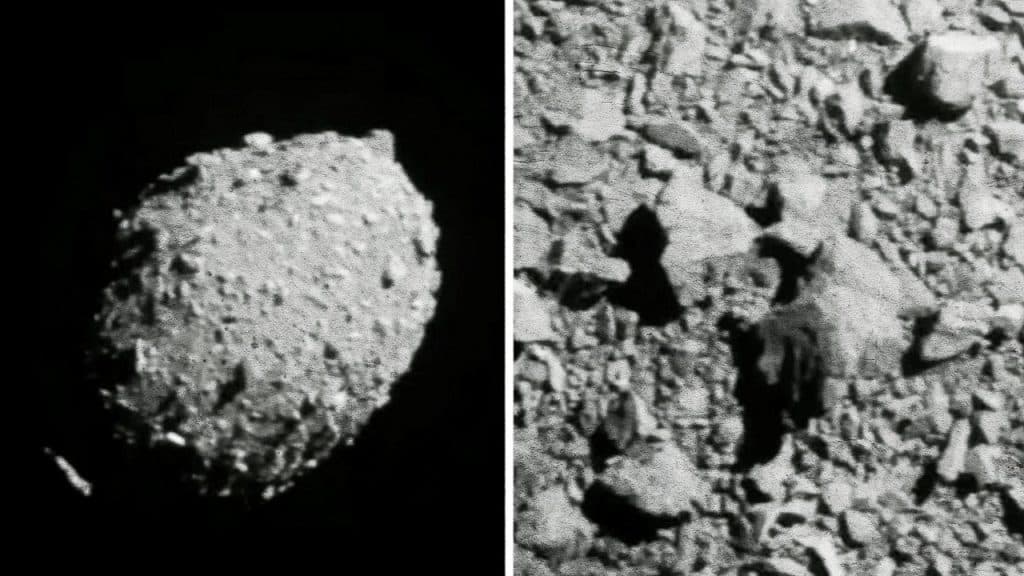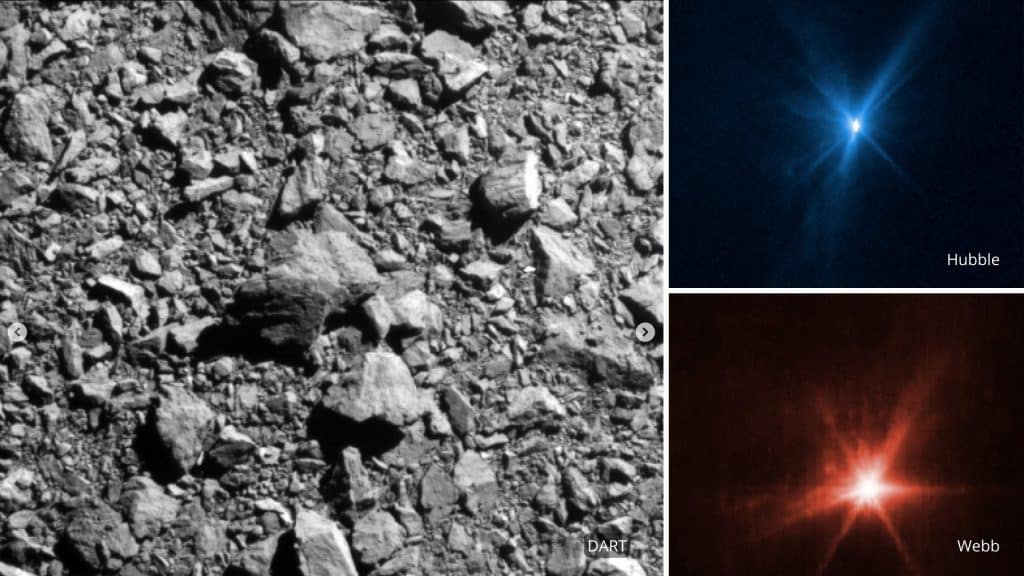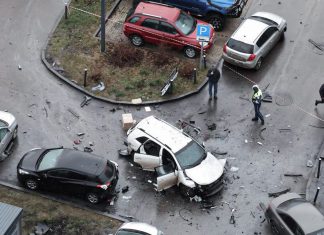
Images taken by ground-based telescopes showed a huge cloud of dust expanding from Dimorphos and its older brother Didymos, which it orbits after the spacecraft collided.
At the same time, these images showed matter traveling thousands of kilometers away. Scientists saw something that called their attention, something that later was corroborated in the images from other telescopes.

A closer view of the impact
NASA’s DART impactor slammed into its pyramid-sized, rugby-ball-shaped target 7 million miles from Earth on Monday night. Images taken by ground-based telescopes showed a large cloud of dust expanding from Dimorphos and its orbiting older brother, Didymos after the spacecraft impacted.
James Webb and Hubble offered a view “only a few kilometers away from the asteroids, in which you could see the material flying out of this explosive DART impact. The James Web and Hubble images confirmed that the impact was stronger than expected, these images were remarkably similar to those taken by the toaster-sized LICIACube satellite, which was only 50 kilometers from the asteroid after it separated from the DART spacecraft a few weeks ago.

The asteroid impact marked the first time that two space telescopes have observed the same celestial body.
Recommended: The British pound is getting its lowest level in history
The real measure of DART’s success will be exactly how much it deflected the asteroid’s trajectory, so the world can start preparing to defend against larger asteroids that could hit us in the future.





